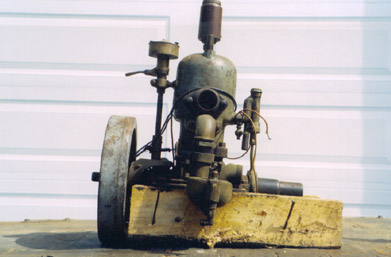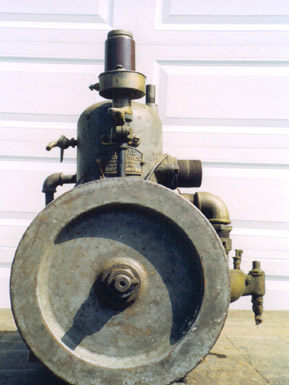|
| Author |
Message |
    
swilcox
New member
Username: swilcox
Post Number: 1
Registered: 04-2005

| | Posted on Wednesday, September 06, 2006 - 09:17 pm: | 




|
Hi all, I have a chance to purchase this Capital Marine engine but I know nothing about them except that they were built in Augusta, Maine by the Fifield brothers. Any idea as to it's value? It comes with the crank handle and a coil plug.
Thanks for any info.....Scott
  |
    
searcher
Senior Member
Username: searcher
Post Number: 139
Registered: 10-2004
| | Posted on Wednesday, September 06, 2006 - 11:11 pm: | 




|
Many of the Capitals spent their working life in salt or brackish water. Back out the drain cock at the bottom of the water jacket and see what is inside the water jacket. Some fine surface rusting inside the jacket is to be expected. If there is some chunks of platy rust, it probably was a salty. If it is free of such loose rust or free of any other deposits in there it probably was a fresh water engine. There are a number of threads on this site that discuss treatments for salt water engines.
What is the serial number? The Capitals rarely have a horsepower rating stamped on them, does this one? What is the diameter of the
flywheel?
The coil plug is a Samson Electric, probably a Perfex Model B. That coil plug contains both the vibrator and the induction coil. They are expensive to buy so treat it kindly. A bad bump can break them off where the thread enters the cylinder head. Best to take it off when moving the engine around. The Fifield Brothers advertised the Capital with the Orswell ignition system. That was also a coil plug but the vibrator was a separate unit from the induction coil. The Perfex appears to have been offered as a less expensive alternative to the Orswell System.
The carburetor looks like a Holley float feed. The Holly was the carburetor of choice on the Capitals but Scheblers were available on request.
The earlier style of this model had a sight feed oiler located just below the water jacket to oil the cylinder and another oiler on the crankcase. The later Capitals still have the boss cast in for the cylinder oiler but the boss was never drilled and tapped. By then, everybody was mixing oil in the gasoline for lubrication which dispensed with the need for oilers. Does this one have the boss for the oiler and is it drilled out? Facing the flywheel, the boss would be on the left side just below where the water jacket ends.
Some later Capitals did not have grease cups down by the crankshaft bearings. Again, facing the flywheel, on the left side high on the water jacket there may be an open Y shaped bracket. If so, there is or was copper tubing leading from the bracket down to the two bearings. Sometimes grease cups were mounted up there and sometimes Model T grease fittings were used instead. I don't know whether the T fittings were a stock item or something users added as a convenience.
At least from the two views you show here, the engine looks quite complete and original. |
|
|
|


|


